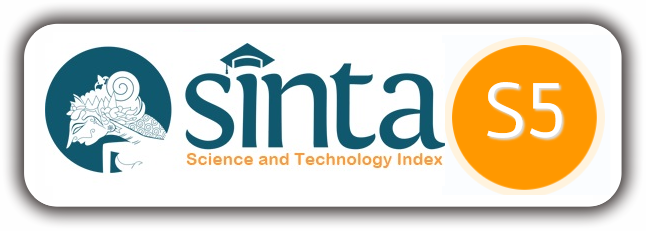Linking Technology Readiness and eWOM Readiness: Evidence from Indonesian MSMEs
DOI:
https://doi.org/10.59525/jess.v4i2.933Keywords:
Marketing, Marketing Strategy, Digital Marketing, Marketing Technology, Word of MouthAbstract
Electronic Word of Mouth (eWOM) has become a central factor influencing consumer behavior in the digital economy, yet many micro, small, and medium enterprises (MSMEs) remain unprepared to manage it effectively. While prior studies have applied the Technology Readiness Index (TRI) in areas such as e-commerce and customer relationship management, little is known about its role in shaping organizational readiness for eWOM. This study addresses this gap by exploring how the four TRI dimensions—optimism, innovativeness, discomfort, and insecurity—affect eWOM readiness among Indonesian MSMEs. A quantitative survey was conducted, and the data were analyzed using structural equation modeling to capture the relationships between constructs. The findings confirm that technology readiness significantly influences MSMEs’ ability to engage with eWOM, with positive dimensions acting as drivers and negative dimensions serving as barriers. The study extends TRI theory into the underexplored domain of digital customer engagement and highlights the need for MSMEs to develop structured processes and managerial capabilities to leverage eWOM strategically. Policy initiatives such as UMKM Go Digital are encouraged to move beyond platform adoption and strengthen support for review management practices. Limitations of the study include its cross-sectional design and single-country focus, suggesting future comparative and longitudinal research.
References
Ainin, S., Parveen, F., Moghavvemi, S., Jaafar, N. I., & Shuib, N. L. M. (2015). Factors influencing the use of social media by SMEs and its performance outcomes. Industrial Management & Data Systems, 115(3), 570–588. https://doi.org/10.1108/IMDS-07-2014-0205
Ali, A., & Gani, M. O. (2019). Impact of eWOM on consumer purchase intention: An empirical study on Bangladesh. International Journal of Business Information Systems, 30(4), 411–427. https://doi.org/10.1504/IJBIS.2019.099808
Alalwan, A. A. (2018). Investigating the impact of social media advertising features on customer purchase intention. International Journal of Information Management, 42, 65–77. https://doi.org/10.1016/j.ijinfomgt.2018.06.001
Blut, M., & Wang, C. (2020). Technology readiness: A meta-analysis of conceptualizations of the construct and its impact on technology usage. Journal of the Academy of Marketing Science, 48(4), 649–669. https://doi.org/10.1007/s11747-019-00680-8
Dwivedi, Y. K., Ismagilova, E., Hughes, L., Carlson, J., Filieri, R., Jacobson, J., Jain, V., Karjaluoto, H., Kefi, H., Krishen, A. S., Kumar, V., Rahman, M. M., Raman, R., Rauschnabel, P. A., Rowley, J., Salo, J., Tran, G. A., & Wang, Y. (2021). Setting the future of digital and social media marketing research: Perspectives and research propositions. International Journal of Information Management, 59, 102168. https://doi.org/10.1016/j.ijinfomgt.2020.102168
Fadlullah, F., & Mauritsius, M. (2023). Analysis of customer experience management readiness using the Technology Readiness Index (TRI). Journal of Economics and Cybernetics, 11(2), 45–58.
Hennig-Thurau, T., Gwinner, K. P., Walsh, G., & Gremler, D. D. (2004). Electronic word-of-mouth via consumer-opinion platforms: What motivates consumers to articulate themselves on the Internet? Journal of Interactive Marketing, 18(1), 38–52. https://doi.org/10.1002/dir.10073
Ismagilova, E., Dwivedi, Y. K., Slade, E., & Williams, M. D. (2020). Electronic word of mouth (eWOM) in the marketing context: A state-of-the-art analysis and future directions. Springer. https://doi.org/10.1007/978-3-030-42545-2
Kementerian Koperasi dan UKM. (2024). Laporan perkembangan UMKM Indonesia 2024. Jakarta: Kemenkop UKM.
Leung, X. Y., Sun, J., & Bai, B. (2017). Electronic word-of-mouth in social networking sites and its impact on consumer purchase intentions. International Journal of Hospitality & Tourism Administration, 18(3), 273–298. https://doi.org/10.1080/15256480.2016.1264908
Litvin, S. W., Goldsmith, R. E., & Pan, B. (2008). Electronic word-of-mouth in hospitality and tourism management. Tourism Management, 29(3), 458–468. https://doi.org/10.1016/j.tourman.2007.05.011
Maroufkhani, P., Wagner, R., Wan Ismail, W. K., & Baroto, M. B. (2019). Big data analytics adoption model for small and medium enterprises. Journal of Science and Technology Policy Management, 10(2), 313–338. https://doi.org/10.1108/JSTPM-02-2018-0023
Mulyono, A., & Indrawati, D. (2022). Digital readiness and its influence on the performance of Indonesian MSMEs. International Journal of Business and Society, 23(1), 77–95.
Parasuraman, A. (2000). Technology readiness index (TRI): A multiple-item scale to measure readiness to embrace new technologies. Journal of Service Research, 2(4), 307–320. https://doi.org/10.1177/109467050024001
Purwanto, E., Sari, R., & Lestari, N. (2023). Digital literacy and eWOM management in Indonesian MSMEs: Opportunities and challenges. Asian Journal of Business Research, 13(3), 55–71. https://doi.org/10.14707/ajbr.2303
Suryaningrum, D. (2021). Technology readiness and e-commerce adoption among small enterprises in Indonesia. Journal of Small Business and Enterprise Development, 28(5), 813–832. https://doi.org/10.1108/JSBED-11-2019-0376
Torres, E., Singh, D., & Robertson-Ring, A. (2015). Consumer e-WOM motivations among hotel customers: A self-determination perspective. Journal of Hospitality Marketing & Management, 24(6), 679–698. https://doi.org/10.1080/19368623.2014.945223
We Are Social. (2024). Digital 2024: Indonesia. Datareportal. https://datareportal.com/reports/digital-2024-indonesia
Downloads
Published
How to Cite
Issue
Section
License
Copyright (c) 2025 Fauzan Fadlullah, Faiz Nuha Ilmawan

This work is licensed under a Creative Commons Attribution 4.0 International License.









